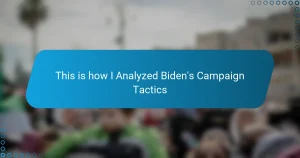Key takeaways
- Media coverage can significantly shape public perception by framing events positively or negatively, influencing opinions beyond factual content.
- Critical evaluation of political articles involves assessing fairness, language bias, and the reliability of sources, promoting better understanding.
- Using tools like media bias rating websites and fact-checking resources enhances awareness of potential biases and misinformation in political reporting.
- Diversifying news sources and asking critical questions about the coverage helps develop a more balanced perspective and informed understanding of political narratives.
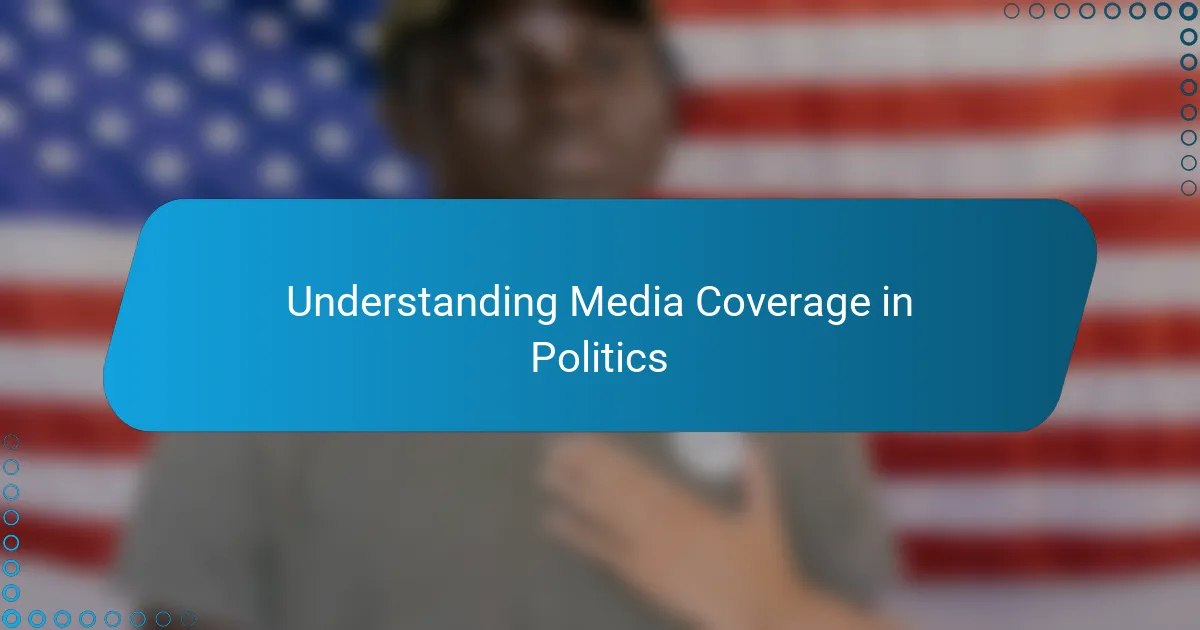
Understanding Media Coverage in Politics
Media coverage in politics isn’t always just about facts; it’s about framing. I’ve noticed how the same event can be portrayed as a triumph or a disaster, depending on the outlet. Have you ever caught yourself feeling differently about a candidate just because of how a story was told?
When I first started paying attention closely, I realized that emotional cues in news—tone of voice, word choice—can subtly shape opinions without us even noticing. It made me question, how much of what I believed was influenced by these invisible nudges rather than the actual policies?
Understanding this dynamic helped me become more skeptical and intentional in my media consumption. Instead of passively absorbing headlines, I try to dig deeper and ask, “What’s the angle here?” It’s a small practice, but it’s changed the way I see political news.
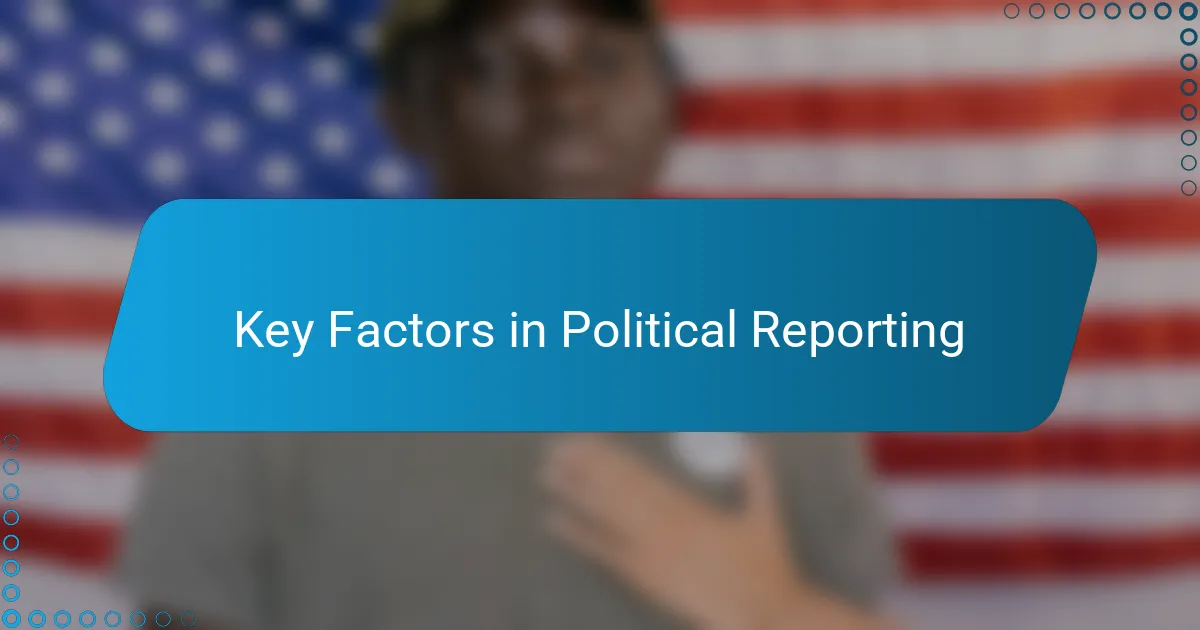
Key Factors in Political Reporting
One thing I’ve learned is that balance is crucial in political reporting. When I see a story that only highlights negatives about a candidate without acknowledging any strengths, it sets off a red flag for me. Doesn’t it make you wonder if the coverage is aiming to inform or to persuade?
Another factor that caught my attention early on was the source of information journalists rely on. Reports often lean heavily on expert opinions, polls, or anonymous insiders—but how transparent are these sources? I found myself asking: Is the narrative shaped by reliable evidence or by whispers behind the scenes?
Finally, I noticed timing plays a significant role in how stories impact public perception. A critical report released right before an election can sway opinions dramatically. Watching this happen made me question how much media timing is a strategy rather than a coincidence—and how aware are we as consumers of this subtle influence?
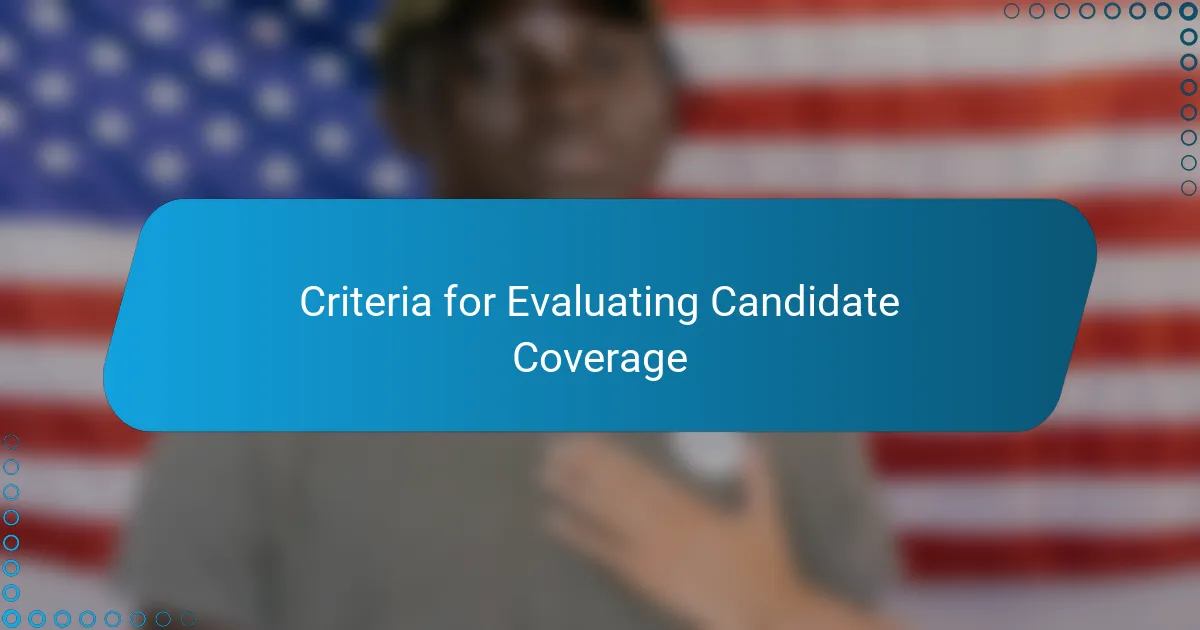
Criteria for Evaluating Candidate Coverage
When I started evaluating candidate coverage, the first thing I looked for was fairness. Does the story give a candidate a chance to explain their position, or does it just throw accusations without context? I’ve found that spotting this kind of imbalance often means the coverage is leaning more toward opinion than fact.
Another criterion I trust comes from examining language closely. Are journalists using charged words to make a candidate look bad or good? I remember reading one article that described a candidate as “unwavering” in one paragraph and “stubborn” in another—it made me wonder what impression they were really trying to plant.
Lastly, I consider how much evidence backs a report. Is the coverage supported by verifiable data, or does it rely heavily on hearsay and unnamed sources? This question helped me sift through stories that seemed important but were actually just amplifying rumors. Have you noticed how much clearer things become when facts take center stage?
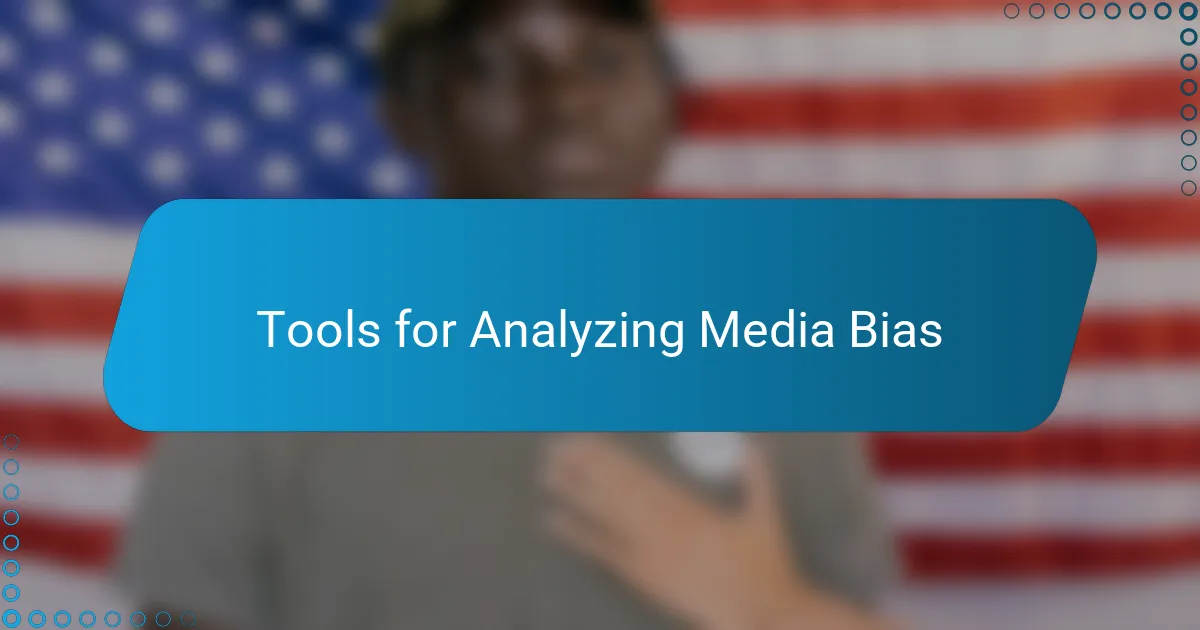
Tools for Analyzing Media Bias
One of the first tools I turned to when analyzing media bias was media bias rating sites. These platforms categorize news outlets on a spectrum from left to right, which helped me quickly identify the typical slant of a source. But I soon realized it’s not just about labels; these tools offered detailed explanations, showing me why certain phrases or story choices indicated bias—something I found incredibly eye-opening.
I also experimented with fact-checking websites to cross-verify claims made in candidate coverage. These sites became my safety net, catching misleading headlines or distorted facts before they shaped my opinion. Have you ever felt that rush of relief when you find that a viral news piece is actually backed by solid evidence? That clarity is priceless.
Then there’s sentiment analysis software, which uses algorithms to gauge the emotional tone of articles. At first, it sounded too techy, but once I saw how it flagged overly negative or positive language, I felt empowered. It made me ask: Am I reacting to the candidate’s record, or just to the tone crafted by the journalist? This tool nudged me toward a more balanced perspective.
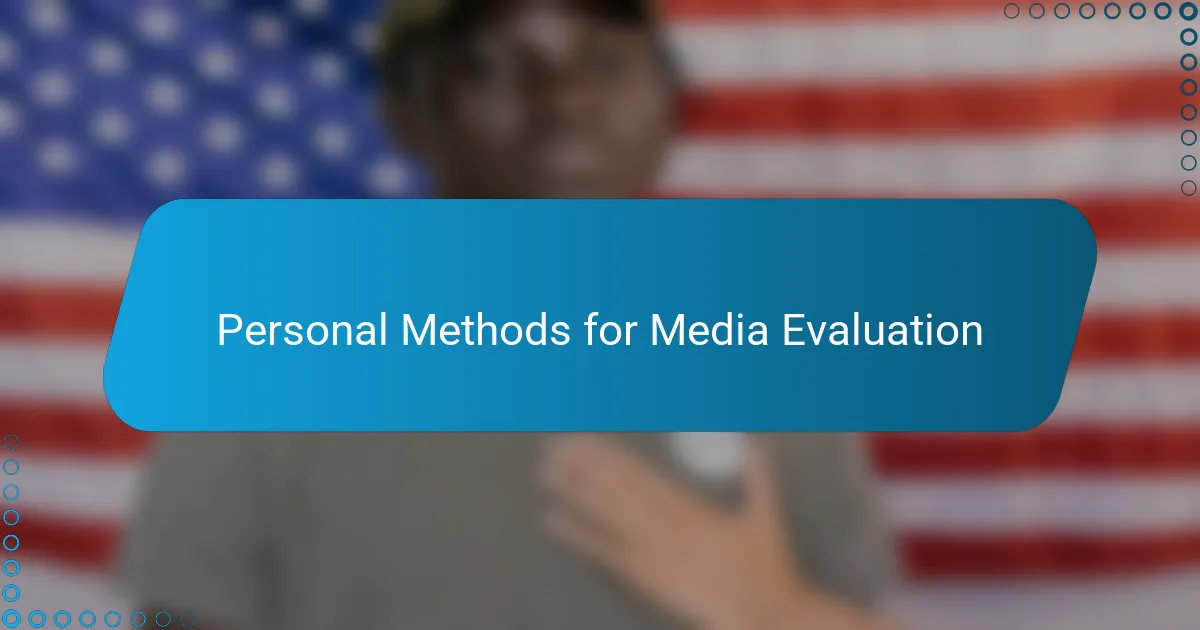
Personal Methods for Media Evaluation
For me, a key personal method in evaluating media coverage involves reading beyond the headline and first few paragraphs. I’ve caught myself jumping to conclusions based on catchy titles, only to find the actual story far more nuanced. Have you ever felt misled just by skimming a headline? Taking the time to read fully has been a game-changer in how critically I assess candidate portrayals.
Another technique I rely on is comparing multiple sources for the same story. It’s fascinating how different outlets can highlight completely different aspects, sometimes even contradicting each other. This practice often sparks a kind of mental debate within me—what’s the common thread here, and where do the biases clearly lie? I like to think of it as assembling a puzzle rather than accepting a single picture.
Lastly, I keep a mental checklist of questions while I read: Who benefits from this story? What’s missing that I’d expect to see? This habit developed after realizing that emotional triggers in articles often sidestep key facts or alternative viewpoints. Asking these questions helps me stay grounded and reminds me to look for underlying intentions instead of being swept up by the narrative.
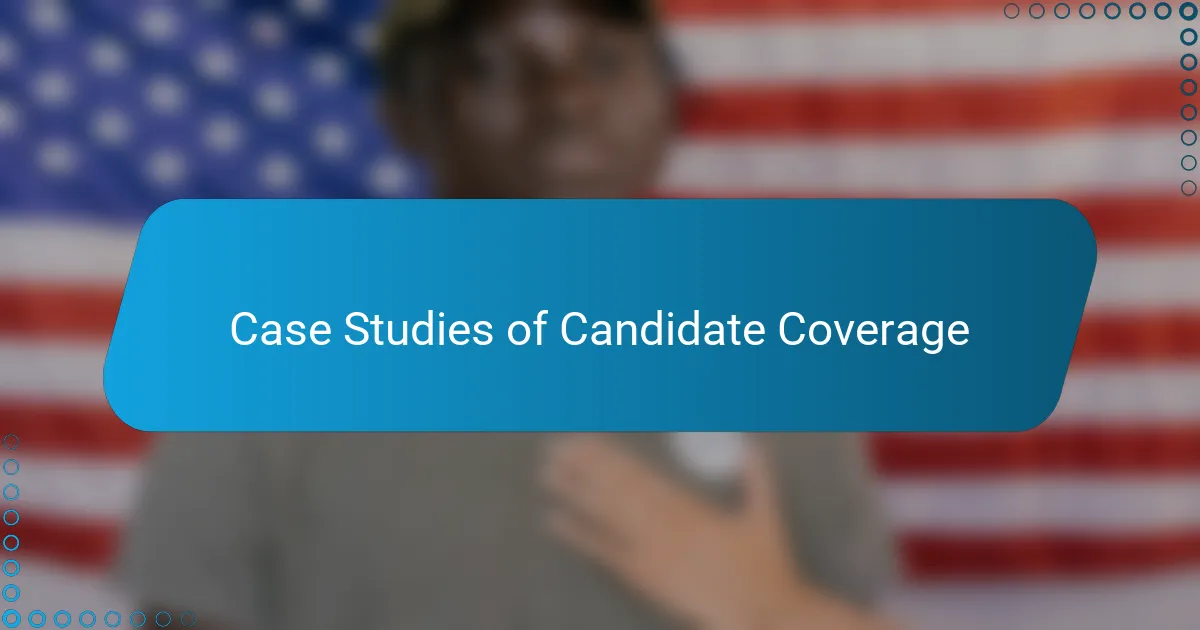
Case Studies of Candidate Coverage
One case that stood out to me was the contrasting coverage of Candidate A during the primaries. While some outlets painted them as a bold reformer, others tended to focus on past missteps, almost dismissing any progress. I remember feeling baffled—how could the same person evoke such opposing stories? It pushed me to dig deeper and ask: what was driving these conflicting narratives?
Similarly, when Candidate B announced their healthcare plan, the tone of coverage varied dramatically. In one article, the policy was hailed as innovative and necessary; in another, it was framed as reckless and expensive without much explanation. This inconsistency made me realize how selective emphasis shapes public perception. Have you ever caught yourself swayed more by how a story was told than what was actually proposed?
Lastly, Candidate C’s media portrayal during debates was a revealing example. Some outlets highlighted their confident rebuttals, while others zoomed in on a single stumble to question competence. It felt like watching two entirely different campaigns unfold depending on the headline. Reflecting on this, I saw how crucial it is to look beyond isolated moments and consider the bigger picture in candidate coverage.
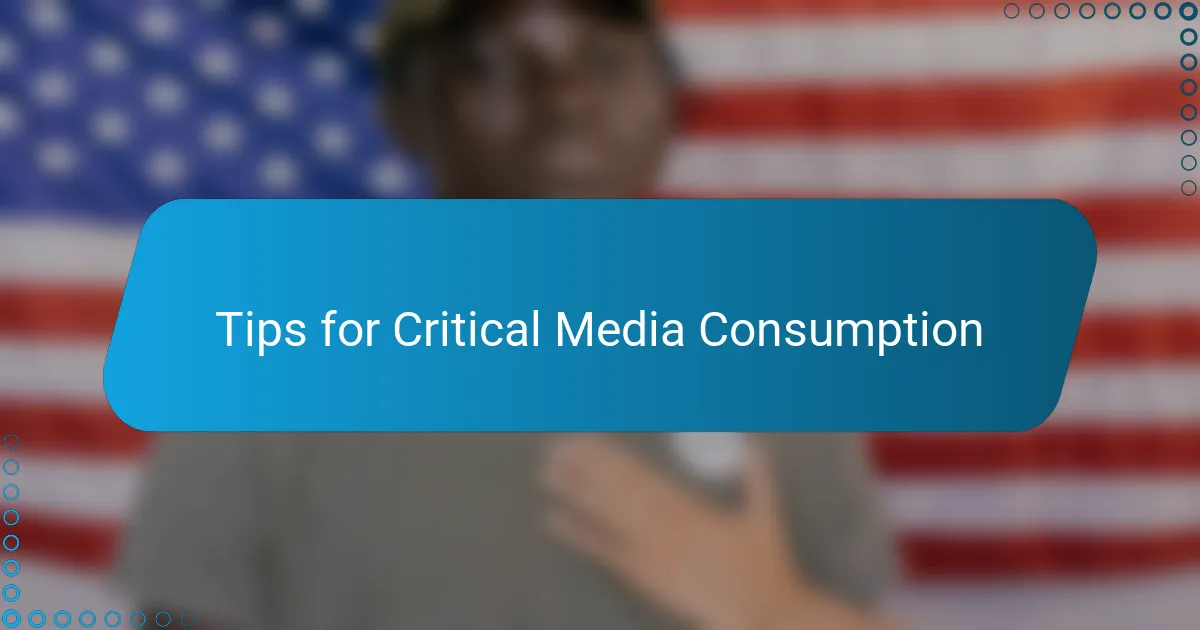
Tips for Critical Media Consumption
One habit that transformed my approach was pausing whenever I felt emotionally triggered by a headline or story. Have you noticed how certain words or tones can make your heart race or set off frustration? I found that stepping back and asking, “Why am I reacting this way?” often peeled back layers of bias I hadn’t caught at first.
Another tip I swear by is diversifying my news diet. It’s tempting to stick with outlets that echo what I already believe, but I learned that seeking out a range of perspectives actually sharpens my judgment. It’s like testing a recipe by tasting from different spoons—you get a clearer sense of the whole flavor instead of a single note.
Finally, I recommend keeping a simple checklist in mind as you consume political coverage: Who is telling this story? What might be left unsaid? What’s the evidence? These quick questions became my anchor, helping me sift through noise and focus on facts rather than spin. Have you tried this kind of mental filtering? It’s surprisingly empowering.


